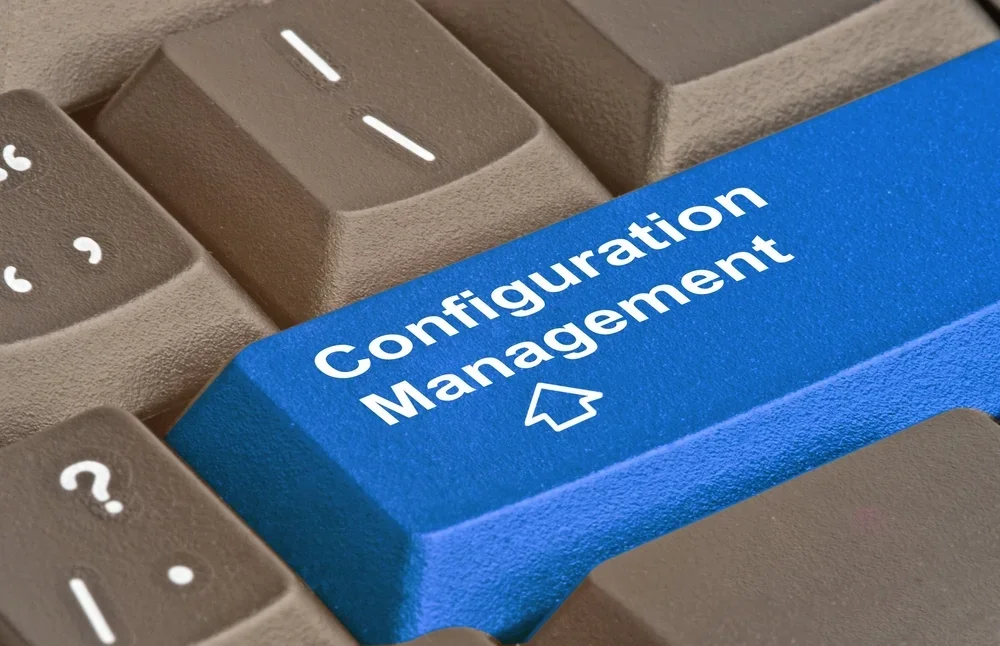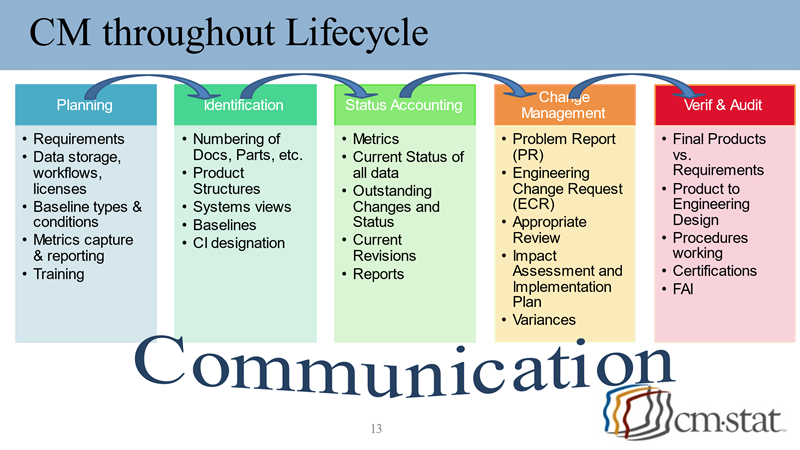Change Control is Not Configuration Management!
What Your Manager Needs to Understand
What is the most frequent obstacle encountered by an organization developing, implementing, or repairing their Configuration Management strategy and its execution?
It is the misunderstanding among product managers, program managers, and business-line executives who think that change control management is configuration management. It is not!
Configuration management, when implemented correctly, is much more than change management, despite the misuse of the acronym “CM” for both terms.
Because of this confusion, some managers conclude that configuration management is primarily a product engineering function.
Or worse, a feature within their PDM software or an add-on module to their PLM solution that simply has to be turned on with the click of a key.
Then off they go, down a rabbit hole leading to a grossly-deficient implementation of configuration management that fails to deliver its true power, potential and protection across the enterprise.
If you are a CM professional, or a student returning from a CM certification training class, who has to explain to their managers and colleagues why configuration management is much more than change control, what should you tell them? Especially knowing that they will likely not have the interest or patience to learn too much.
Three Most Important Talking Points
In our training classes, here’s what CMstat recommends as the three most salient talking points for conversations, emails, or slides:
1. Configuration Management is foremost a business and product-line strategy that spans the enterprise and lifecycle, including supply and service chain partners. It should not be thought of as primarily a product engineering function.
As such, CM deserves managerial oversight and funding to be implemented across all affected organizational functions. While these can be site-dependent, they may include contracts, requirements, engineering, manufacturing, test, quality, procurement, supply chain, logistics, compliance, customer support and service operations.
The closed-loop processes within CM facilitate feedback across all stakeholders that enables organizations to excel due to improved communication throughout the lifecycle, documented performance metrics and automated then optimized workflows.
2. There are five foundational elements in a complete CM implementation that must include: configuration Planning, configuration Identification, configuration Status Accounting, configuration Change Control, and configuration Verification and Audits.
Managing change control is only one element of a comprehensive CM strategy. But there can be no true change control without the change implementation and change verification processes provided by CM.
Furthermore, the resulting data management processes which enable these five components flow and weave their way across multiple organizations that create, use, examine, or revise configuration-related data. Without the capabilities and checks provided by CM, the digital thread can rapidly deteriorate into digital knot.
3. If an organization fails to implement all of the core elements of CM, and not just change control, they will incur increased risk for product failures, warranty recalls, dissatisfied customers, bad press, legal liabilities, and financial obligations.
These potential risks are magnified due to ever-increasing complexity in product requirements, project management, model-based systems engineering challenges, supply chain contributions, regulatory compliance demands, data retention and retrieval mandates, and customer use scenarios that can extend (or unexpectedly shorten) product lifecycles for decades.
This is why, at one time, rudimentary engineering change control procedures may have been quite adequate, but now they are simply are no longer sufficient by themselves without full configuration management.
Additional Resources
For those managers who do wish to learn more, CMstat has written extensively on why implementing configuration management requires more than just change control. Here’s a few of these articles and white papers:
A Configuration Management Primer for Aerospace & Defense Project Managers
How is Configuration Management Different from Change Management
Determining if Configuration Management and Change Control is Under Management Control
Still need more help in educating your management and colleagues on the importance of CM and your role as a CM professional? Contact the CM specialists at CMstat HERE for an educational workshop on CM Planning or an independent assessment of your own CM implementation – at whatever state of maturity it may be in – using a checklist developed from over 30 years of real-world experience with industrial customers.
Then follow future discussions about Configuration Management by registering to receive CMsights by email or following CMstat on LinkedIn.
Receive CMsights
Subscribe to CMsights News for the latest updates from CMstat on Configuration Management, Data Management, EPOCH CM, and EPOCH DM.
Request a Demo
See how EPOCH CM and EPOCH DM support industry standards and best practices in Configuration Management and Data Management.



